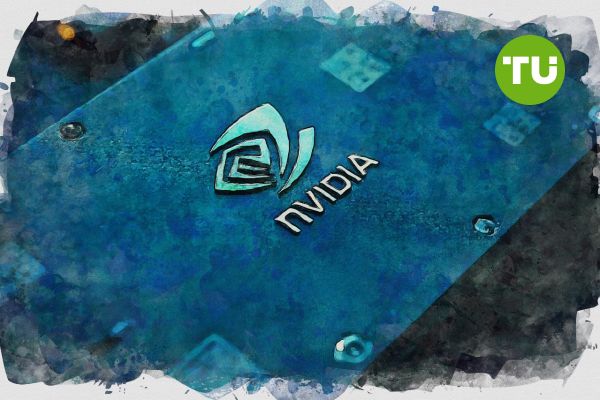Nvidia stock slips 2.1% as Bourgeon Capital trims stake by 15,495 shares
 Nvidia recently announced the establishment of an AI research lab in the United Kingdom
Nvidia recently announced the establishment of an AI research lab in the United Kingdom
As of June 16, Nvidia stock is trading at $141.97, down 2.1% in the last 24 hours.
Despite the daily decline, the broader trend remains decisively bullish, underscoring the resilience of investor sentiment toward the chipmaker’s long-term growth prospects.
Highlights
- Nvidia stock declined 2.1% following a significant share sale by Bourgeon Capital Management.
- Technical indicators remain bullish, with support at $130 and resistance at $143 and $150.
- Despite short-term volatility, Nvidia’s AI-driven growth and strategic partnerships support a positive long-term outlook.
Nvidia’s stock price continues to trade well above both its short-term and long-term moving averages. The 50-day moving average sits at approximately $135, while the 200-day moving average is positioned around $127. Notably, the stock broke above its 200-day average in recent sessions, a signal often interpreted as confirmation of sustained upward momentum. Technically, Nvidia shows strength in both trend-following and momentum indicators. The Relative Strength Index (RSI) is currently near 60, suggesting that while the stock has seen a strong rally, it has yet to reach overbought levels.
The Moving Average Convergence Divergence (MACD) indicator remains in positive territory, showing that the stock still has upward momentum. From a price structure perspective, Nvidia faces resistance at the $143 level—its recent intraday high—and then again around $150, a psychologically significant level and historical pivot point. Support levels are noted at $130, which has acted as a recent consolidation base, and further down at $115, representing the lower boundary of the March breakout range.

NVDA stock price dynamics (April 2025 - June 2025). Source: TradingView
Volume has shown mixed signals. While recent pullbacks have occurred on relatively low volume, suggesting a lack of conviction among sellers, bullish sessions have attracted stronger participation. This dynamic supports the idea that dips are likely to be bought, at least in the short term, as Nvidia continues to benefit from its AI-driven growth narrative.
AI investments and strategic expansions fuel optimism
Nvidia’s leadership in the artificial intelligence hardware space remains the central pillar of its stock valuation. The company’s GPUs are indispensable for training large-scale AI models, and demand for its H100 and A100 chips remains robust. In a notable strategic development, Nvidia recently announced the establishment of an AI research lab in the United Kingdom, aimed at expanding its research footprint and deepening its collaborations with leading universities and industrial partners. This move is seen as a way to further entrench Nvidia’s dominance in the global AI supply chain.
Adding to the bullish narrative, Nvidia has reportedly entered into a major partnership with a Saudi Arabian AI firm, backed by the country’s sovereign wealth fund. This partnership could potentially unlock access to significant capital and market expansion opportunities in the Middle East, helping Nvidia diversify its geopolitical risk. Indeed, these developments have helped Nvidia regain a market capitalization in excess of $3 trillion, rivaling other tech titans like Apple and Microsoft.
However, not all signals are unequivocally bullish. Bourgeon Capital Management LLC recently disclosed the sale of 15,495 shares of Nvidia, a move that may indicate profit-taking or risk adjustment as the stock approaches near-term highs. Additionally, there are lingering concerns about U.S. export restrictions on AI chips to China, which have already prompted Nvidia to revise its second-quarter revenue guidance downward. Interestingly, the stock responded positively to this revision, rising by 5% post-announcement—indicating investor confidence that Nvidia’s growth will remain intact despite regulatory headwinds.
Cautious upside potential with key resistance tests ahead
Looking ahead, Nvidia’s stock has the potential to extend its gains, provided it successfully clears the $143 resistance zone. A decisive breakout above this level would likely catalyze a move toward the $150 mark, where prior sellers may re-enter the market. If bullish momentum sustains, Nvidia could target $160 within the next few weeks, contingent on broader market support and positive AI sector developments.
Conversely, a failure to hold the $130 support level could invite short-term selling pressure, potentially driving the stock back toward the $115-$120 range. However, given Nvidia’s strong fundamental backdrop, any such pullbacks are likely to be temporary and present new buying opportunities.
On June 12, CEO Jensen Huang launched the Huang Charitable Foundation, pledging $100 million in Nvidia stock to support science education and public service. The initiative highlights leadership’s confidence in Nvidia’s long-term value and reinforces its mission to foster innovation.













































































































































